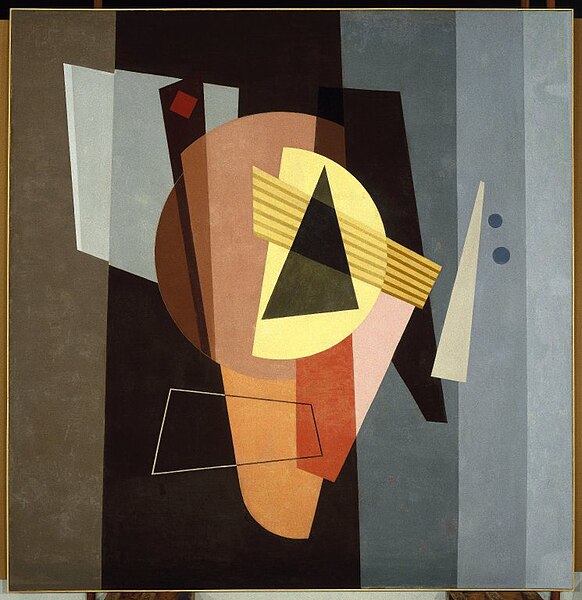Adolph Friedrich Reinhardt was an abstract painter active in New York for more than three decades. He was a member of the American Abstract Artists (AAA) and part of the movement centered on the Betty Parsons Gallery that became known as abstract expressionism. He was also a member of The Club, the meeting place for the New York School abstract expressionist artists during the 1940s and 1950s. He wrote and lectured extensively on art and was a major influence on conceptual art, minimal art and monochrome painting. Most famous for his "black" or "ultimate" paintings, he claimed to be painting the "last paintings" that anyone can paint. He believed in a philosophy of art he called Art-as-Art and used his writing and satirical cartoons to advocate for abstract art and against what he described as "the disreputable practices of artists-as-artists".
Portrait of the artist at work.
American Abstract Artists
American Abstract Artists (AAA) was founded in 1937 in New York City, to promote and foster public understanding of abstract art. American Abstract Artists exhibitions, publications, and lectures helped to establish the organization as a major forum for the exchange and discussion of ideas, and for presenting abstract art to a broader public. The American Abstract Artists group contributed to the development and acceptance of abstract art in the United States and has a historic role in its avant-garde. It is one of the few artists’ organizations to survive from the Great Depression and continue into the 21st century.
Irene Rice Pereira with a painting, 1938. I. Rice Pereira was an early member of American Abstract Artists.
José Ruiz de Rivera, 1937. The sculptor was an early American Abstract Artists member.
Paul Kelpe, Untitled, From the Williamsburg Housing Project Murals, 1938. Brooklyn Museum (L1990.1.3). Paul Kelpe was a founding member of American Abstract Artists.
Marsden Hartley (American, 1877-1943). Painting No. 48, 1913. Brooklyn Museum





